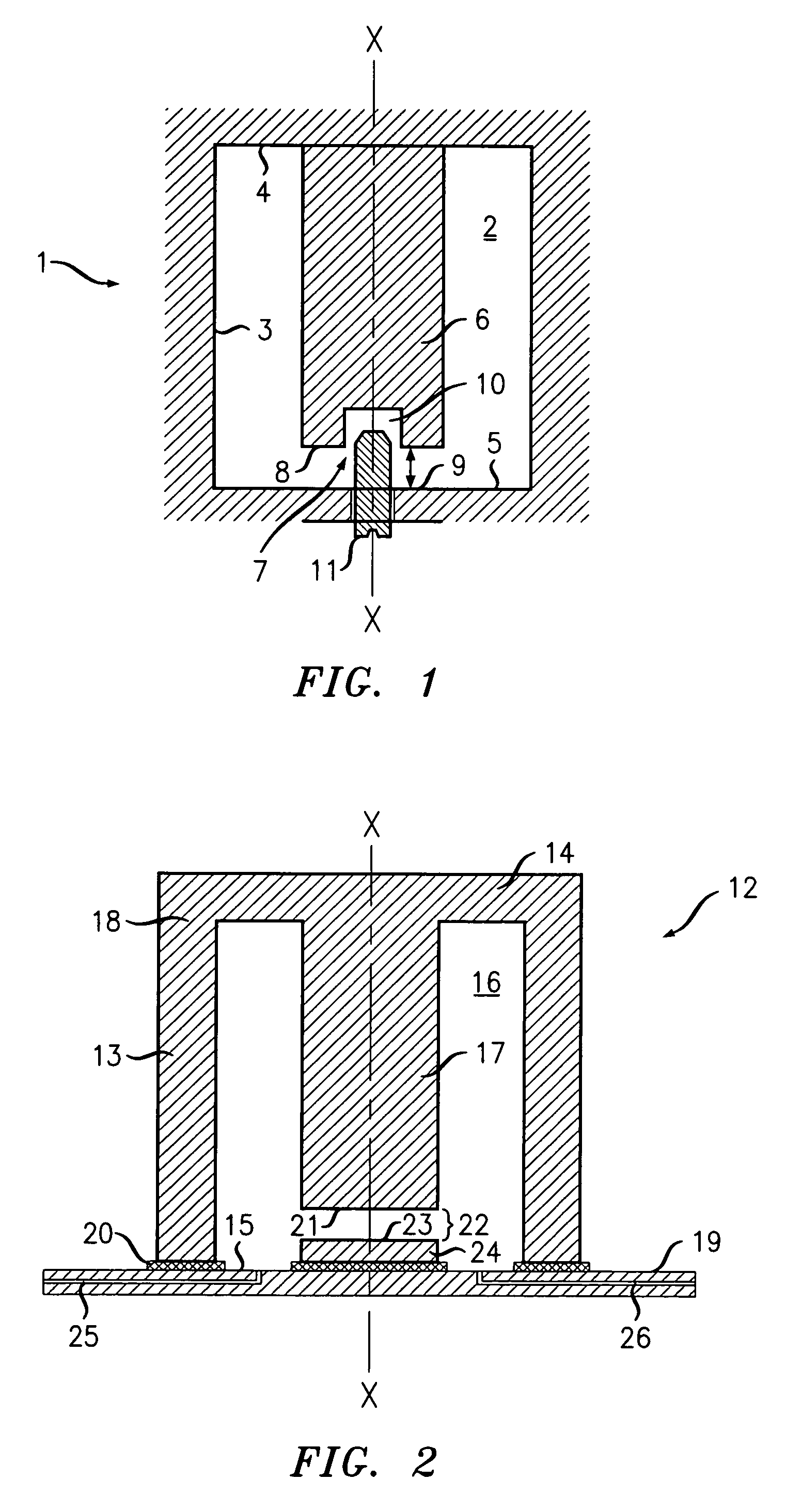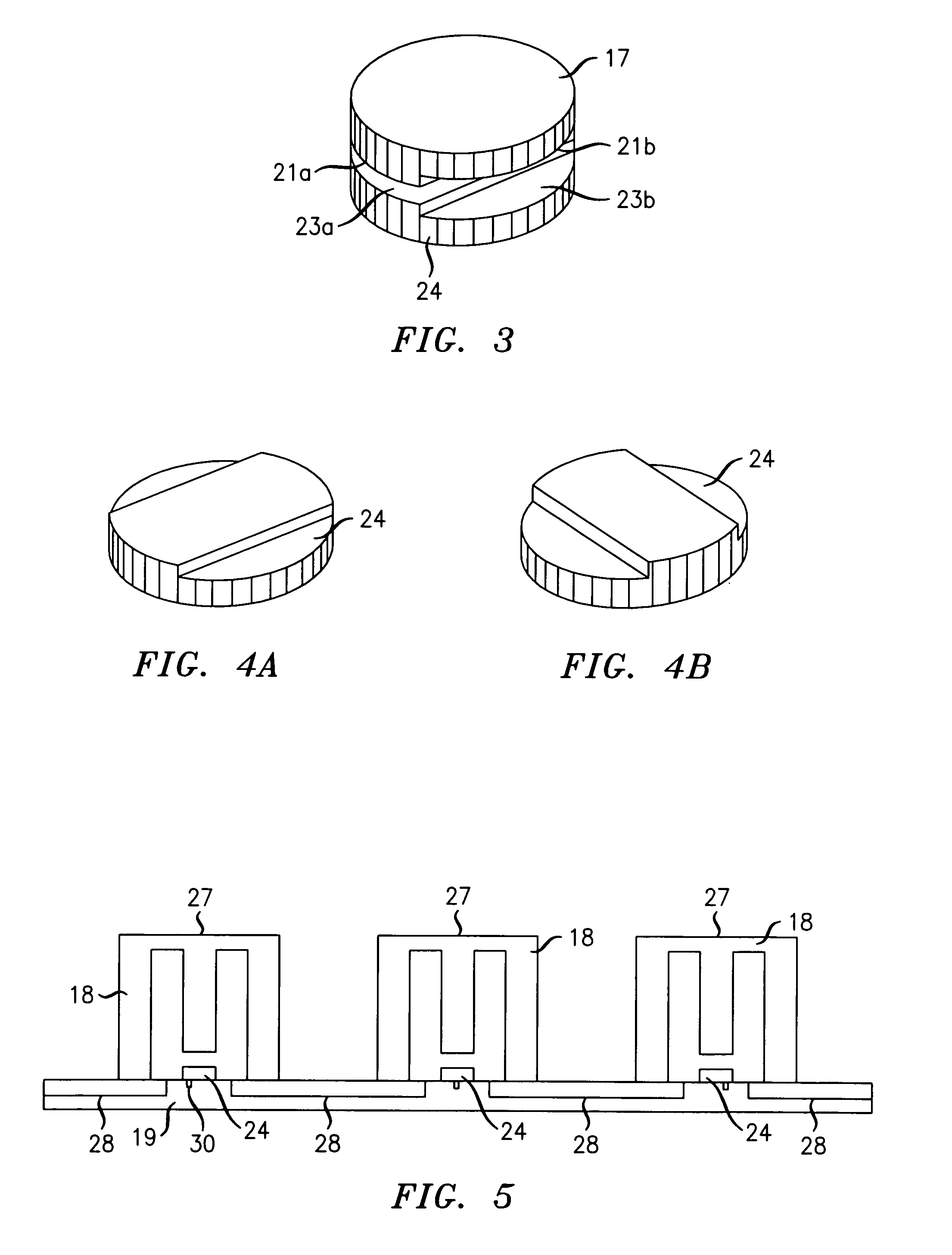Re-entrant resonant cavities and method of manufacturing such cavities
- Summary
- Abstract
- Description
- Claims
- Application Information
AI Technical Summary
Benefits of technology
Problems solved by technology
Method used
Image
Examples
Embodiment Construction
[0023]With reference to FIG. 2, a re-entrant microwave resonant cavity 12 comprises a cylindrical wall 13, with first and second end walls 14 and 15 respectively at each end to define a volume 16 between them. A stub 17 is extensive from the first end wall 14 into the volume 16, being located along the longitudinal axis X-X of the cylindrical wall 13. The cylindrical wall 13, first end wall 14 and stub 17 are integrally formed as a single molded plastic component 18, the interior surface of which is metallized with a layer of silver. The second end wall 15 is defined by a metallization layer carried by a printed circuit board substrate 19. The cylindrical wall 13 is joined to the metallization layer by solder 20 laid down in a surface mount soldering process during fabrication of the device.
[0024]The end face 21 of the stub 17 defines a gap 22 between it and the facing portion 23 of the second end wall 15. The facing portion 23 of the second end wall 15 is formed by a rostrum 24, wh...
PUM
| Property | Measurement | Unit |
|---|---|---|
| Fraction | aaaaa | aaaaa |
| Volume | aaaaa | aaaaa |
| Frequency | aaaaa | aaaaa |
Abstract
Description
Claims
Application Information
 Login to View More
Login to View More - R&D
- Intellectual Property
- Life Sciences
- Materials
- Tech Scout
- Unparalleled Data Quality
- Higher Quality Content
- 60% Fewer Hallucinations
Browse by: Latest US Patents, China's latest patents, Technical Efficacy Thesaurus, Application Domain, Technology Topic, Popular Technical Reports.
© 2025 PatSnap. All rights reserved.Legal|Privacy policy|Modern Slavery Act Transparency Statement|Sitemap|About US| Contact US: help@patsnap.com



